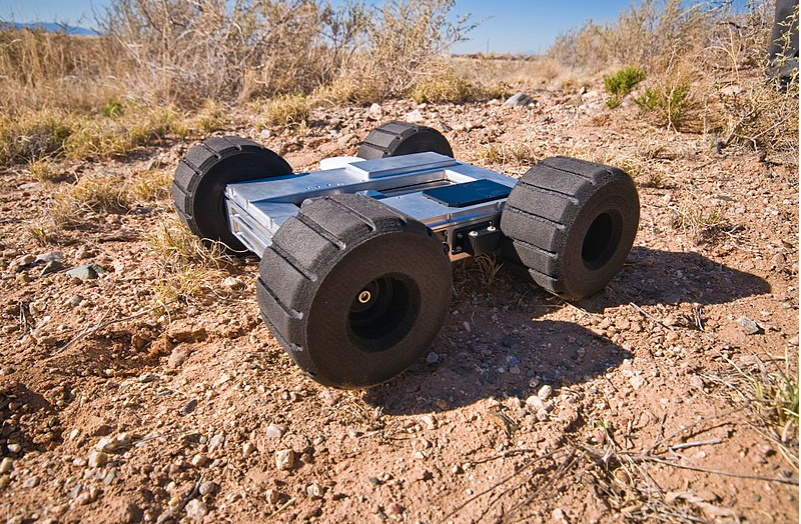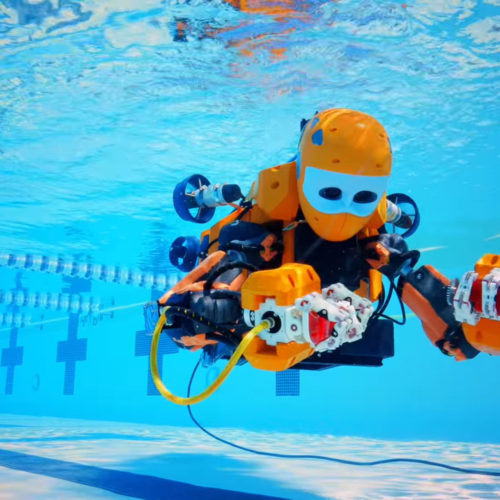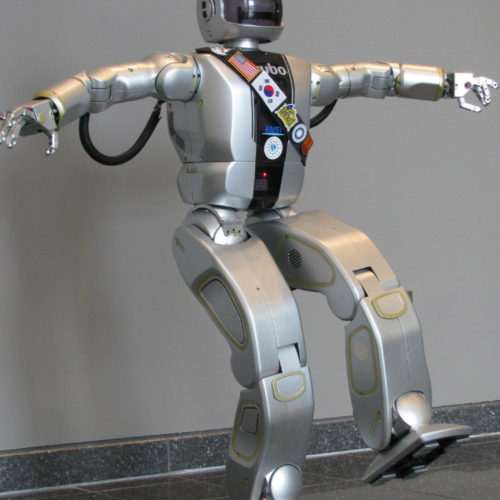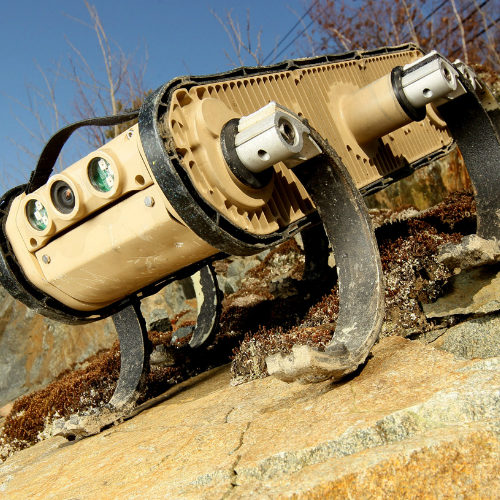Handle On Wheels
Handle is a robot, standing over 6 feet tall that has wheels instead of feet. It travels along at a serene nine miles per hour and can manage about 15 miles on one charge of its battery. Built in humanoid form, Handle can pick up and move heavy loads, and because of the flexibility the wheels give, it can squeeze into awkward places quite easily. Wheeled robots are great in open spaces and would be good moving heavy goods about in a warehouse. Another use would be for them to go on patrol with the military, a bit like a pack animal would.
There are robots with tracks, which are good for climbing rubble and debris, but the ones with feet are the best for inside buildings. As humans we can adapt to whatever terrain we have to negotiate, and one day there will be a robot that can change from wheels, to tracks or feet, as it needs to.
For now we have Handle, an extremely efficient, graceful wheeled robot that has taken the evolution of robotics a step further. It has speed and agility with the capability to jump an impressive 48 inches. Boston Dynamics, the developers of Handle, describe the attributes being so useful because of the combination of legs and wheels, which they say is the best of both worlds.
Evolution chose not to give humans wheels, so in the long run robots like Handle will be more efficient than us.

A typical four wheeled robot
Better Than Other Wheeled Robots
Handle wins out over most other wheeled robots because most of them do not have the combination of wheels and legs. Usually they can navigate on flat ground because of motorized wheels that propel them. This makes them easier to design for use on flat ground, but not so good if the terrain starts to get a bit rough or they encounter obstacles. Two wheeled robots generally are hard to balance, and often other wheels are added for stability. Normally they have differential steering, which gives each wheel its own steering mechanism. It is by rotating different wheels in different ways that enables them to change direction.
There are wheeled robots on the market that can deal with more awkward terrains, but they tend to have at least four wheels and no legs. The contact points between the wheels and the ground are the important factor, and how this is configured affects the efficiency of the robot. Extra wheels take away the need for specialised balancing algorithms, making the design and build simpler. Four wheels are considered to be the most stable, and the best at steering.
With all these associated problems to overcome, it is easy to see why Handle is such an achievement for Boston Dynamics.
You might also like
OceanOne – a waterproof humanoid
Humans can do a lot of things – but they cannot breath under the water. This makes us incapable of behaving freely in the ocean. To explore it we need
HUBO
Hubo was one of the first advanced full-body humanoid robots developed outside Japan. But he’s probably better known for another humanoid: Albert Hubo, which had a Hubo body and an
RHex
RHex is a six-legged robot with inherently high mobility. RHex is a creation of researchers at the University of Pennsylvania who hope it could one day climb rubble in emergency



